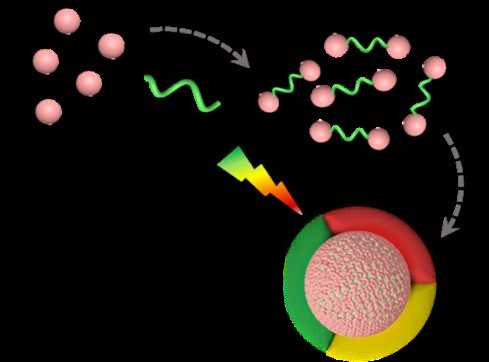Fluorescence imaging is a powerful tool for disease diagnostics and treatment. The biocompatibility and stability of the used imaging agents are important for this technique. The self-assembly of peptides is a useful strategy to construct biocompatible fluorescent nano-imaging agents. However, the noncovalent interactions that usually drive peptide self-assembly are susceptible to breakdown in a physiological environment.
Xuehai Yan and colleagues, Institute of Process Engineering of the Chinese Academy of Sciences, Beijing, have developed a covalent assembly strategy for the fabrication of stable, cross-linked peptide-based fluorescent nanoparticles. The cross-linking compensates the instability of noncovalent interactions in peptide self-assembly. The team used glutaraldehyde (pictured in green) as a cross‐linker to connect the dipeptide H-Phe-Phe-NH2∙HCl (pictured in pink).
The resulting multi-color fluorescent nanoparticles are biocompatible and stable in living cells. The multi-color fluorescence emission can be easily regulated by changing the reaction time during self-assembly. The strategy can be used to design versatile imaging agents for bioimaging applications.
- Covalent assembled dipeptide nanoparticles with adjustable fluorescence emission for multi-color bio-imaging,
Xuehai Yan, Shukun Li, Yamei Liu, Ruirui Xing,
ChemBioChem 2018.
https://doi.org/10.1002/cbic.201800434



